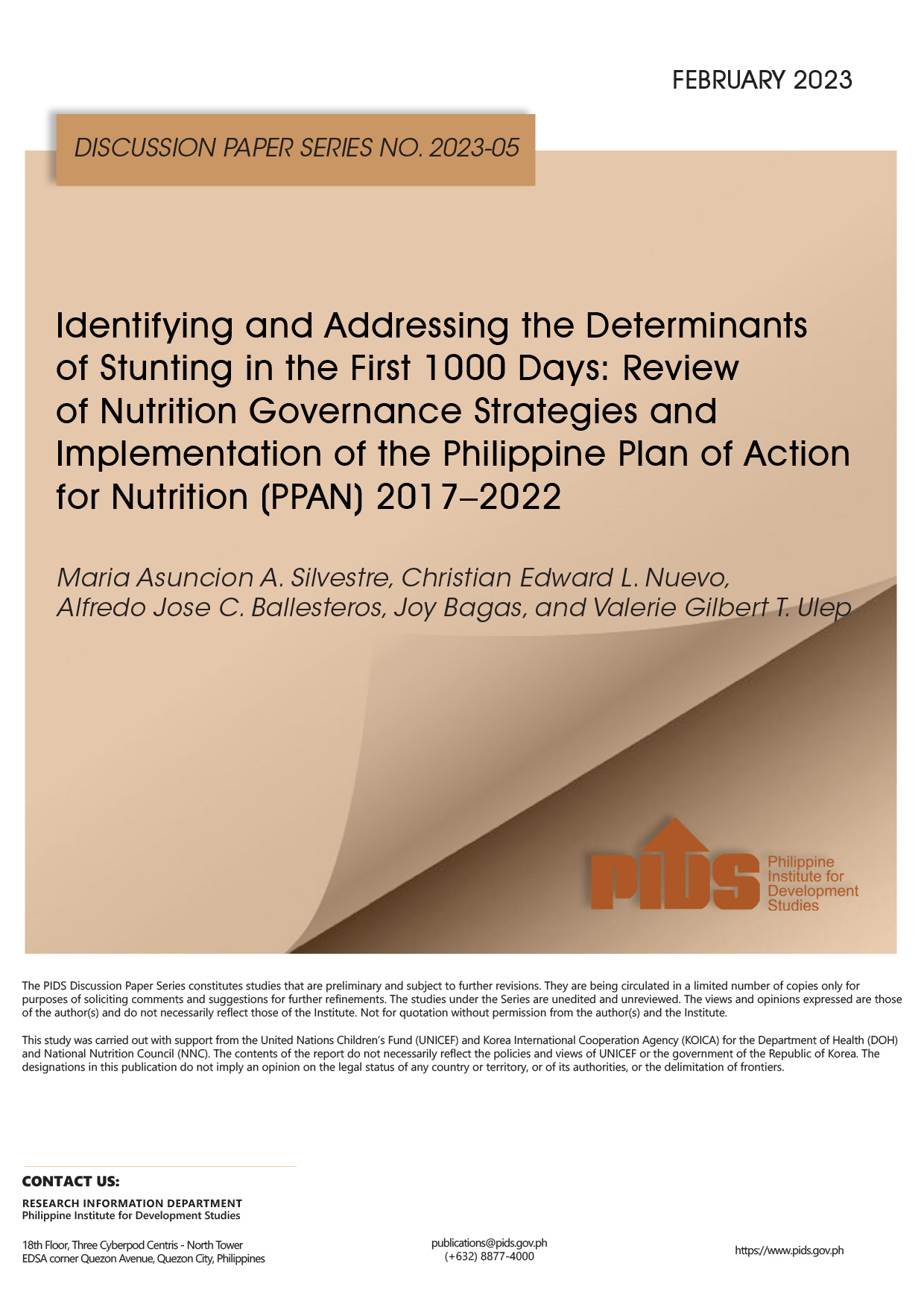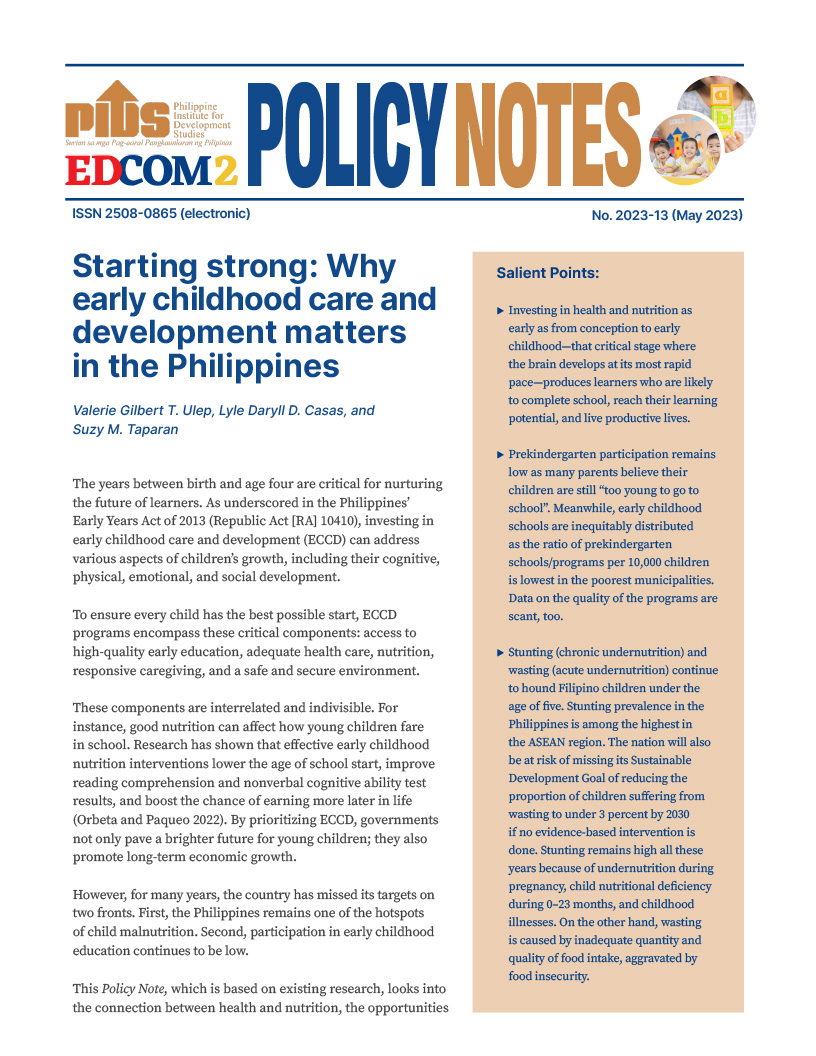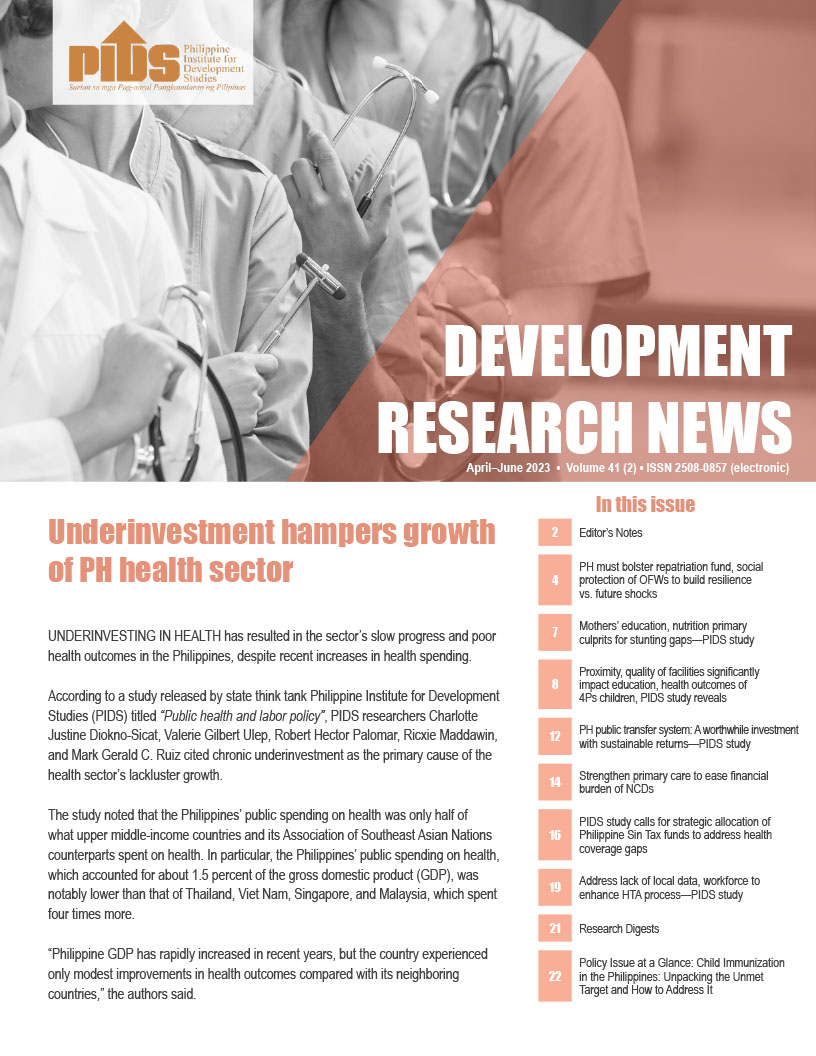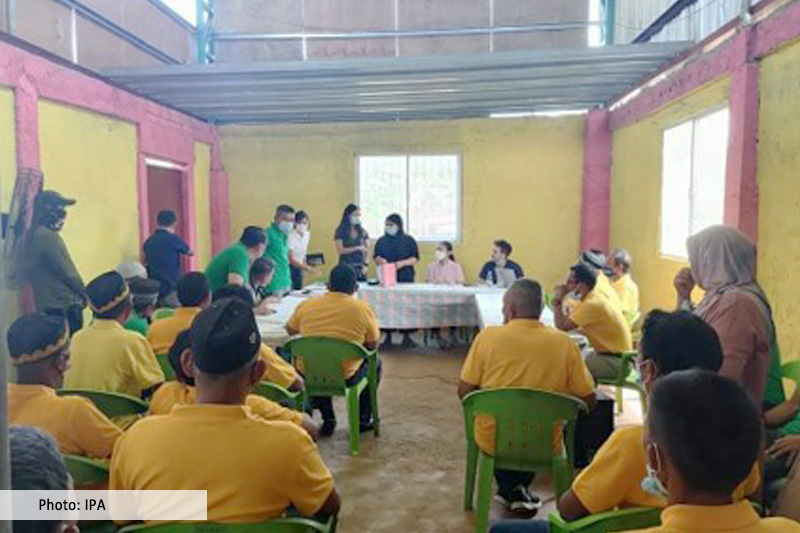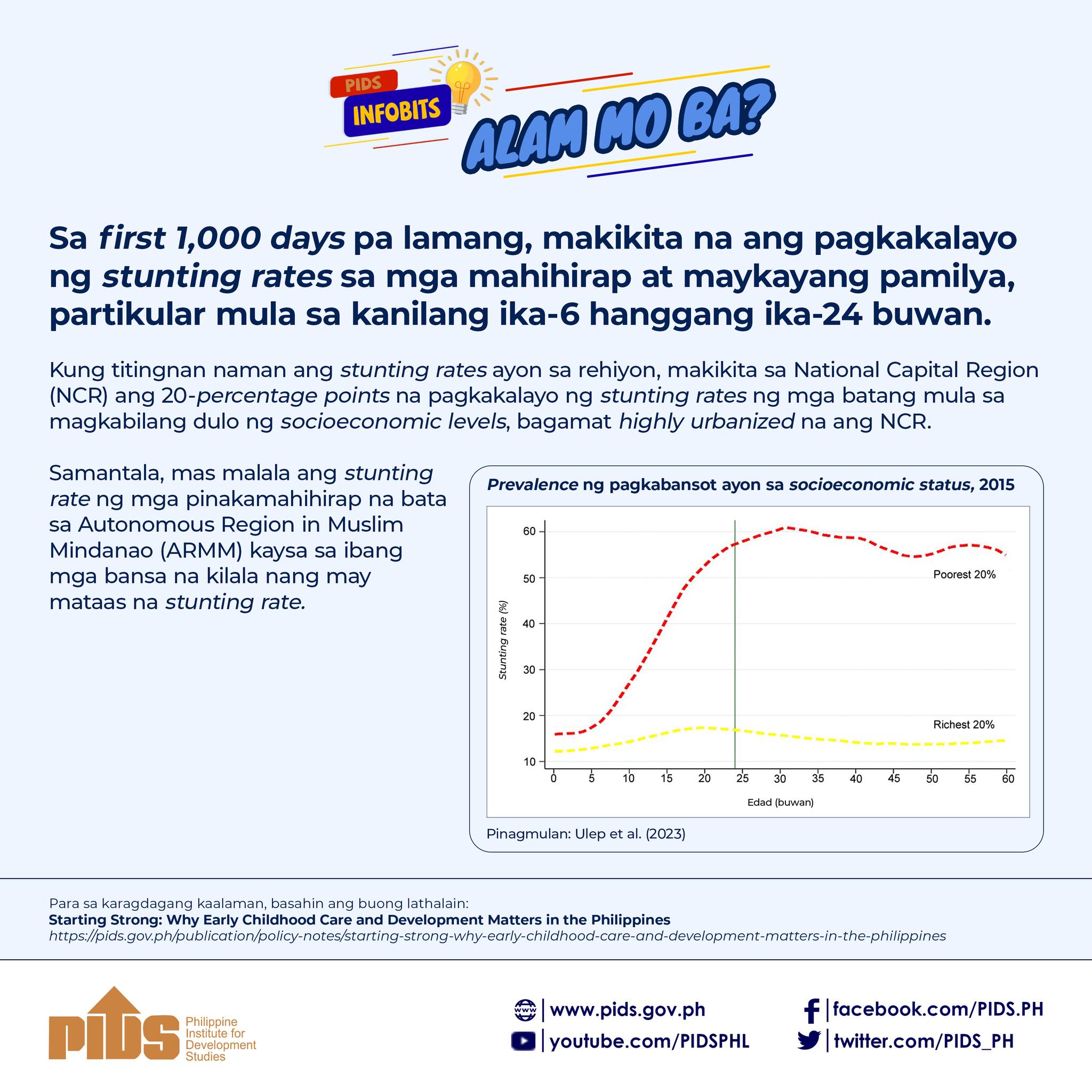This study reviewed public expenditures on nutrition (Annual Investment Plans [AIPs] and Gender and Development [GAD)] budgets) and evaluated the implementation of the Philippine Plan of Action for Nutrition (PPAN 2017–2022) at regional to barangay levels to examine whether current strategies and investments are directed toward cost-effective interventions. The delivery and management of nutrition-sensitive programs and interventions were also assessed by looking at the three dimensions of awareness, adoption, and accountability. Qualitative data collection through key informant interviews (KIIs) was undertaken for Objective 3a (LGU nutrition governance) and Objective 3b (PPAN assessment) in an integrated manner. Eight KIIs were conducted at the regional, 9 at the provincial, and 26 at the city/municipality levels, and 104 interviews were conducted at the barangay level from January to March 2021.
Higher levels of governance (regional to city/municipality levels are cognizant of the PPAN (2017–2022) as the national strategy to improve nutrition. Integral to the Philippine Development Plan, considered as a roadmap for operationalizing programs, projects, and activities. At these levels, the PPAN framework is integrated with local nutrition action and investment plans. However, there is a general lack of awareness of the PPAN at the barangay level, which is the locus of implementation. Budget allocation and implementation are inconsistent and highly fragmented across different governance levels. At lower LGU levels financing nutrition programs is perceived to be highly dependent on the priority of and buy-in from local chief executives, particularly mayors. This disparity in funding across LGUs is highly indicative of a lack of specific guidance for budget allocation. Given the limited budget, local nutrition committees must prioritize programs and target beneficiaries. A deficit in human resources, especially at the city/municipality and barangay levels, remains a major bottleneck in implementation. Regional NNC Offices serve as a conduit for accountability and reporting between the national level and LGUs. They are also responsible for advocating resource generation and mobilization and building linkages. The MELPPI is done to track program implementation. Provinces function as intermediaries between LGUs and stakeholders through advocacy, strategy development, and overall knowledge brokering. Cities and municipalities, on the other hand, are the primary drivers of implementation. They craft and develop local nutrition action plans and support barangays at the forefront of implementation. At their level, they perform a program implementation review (PIR) to assess the accomplishment of targets and programmatic performance based on nutrition outcomes evidenced by OPT results - the main data for reporting the prevalence of different forms of malnutrition and overall nutritional status. Results helped inform a proposed evidence-based framework for the comprehensive and sustainable implementation of the First 1000 Days Strategy and Nurturing Care Framework for Early Child Care and Development.
Comments to this paper are welcome within 60 days from the date of posting. Email publications@pids.gov.ph.

